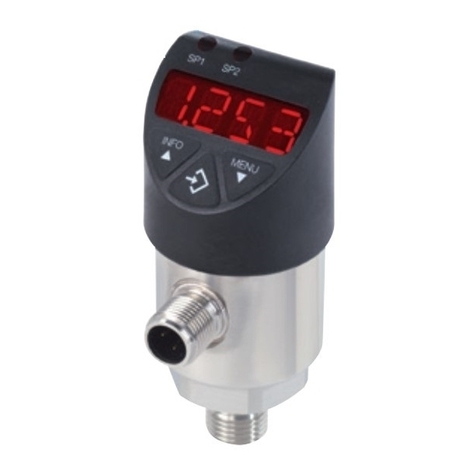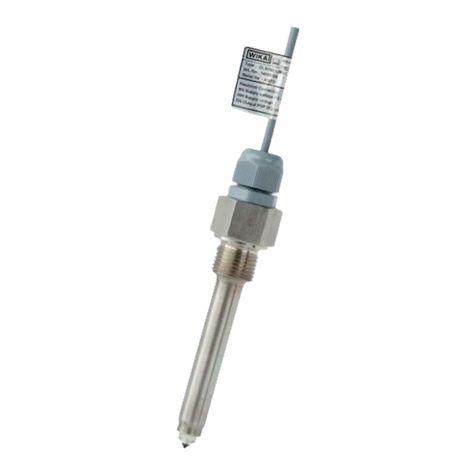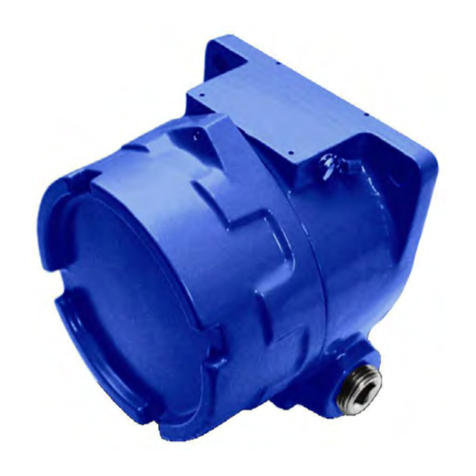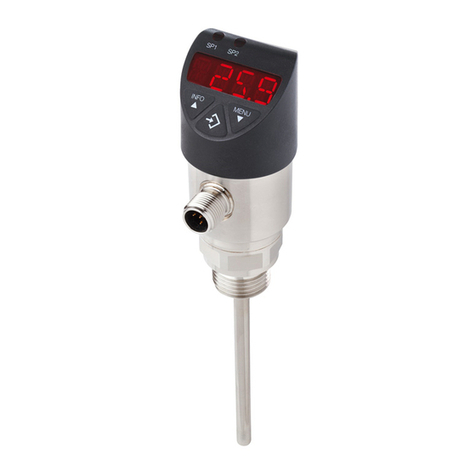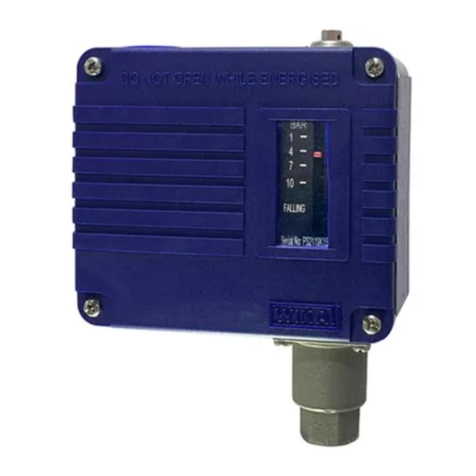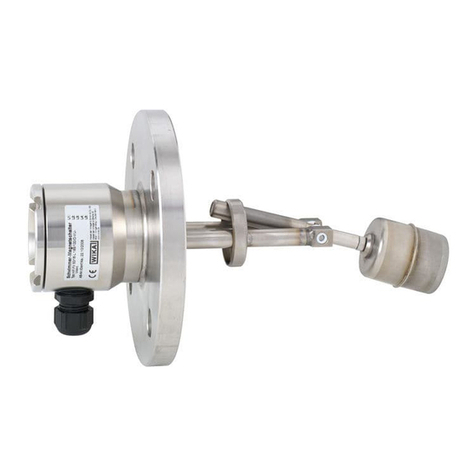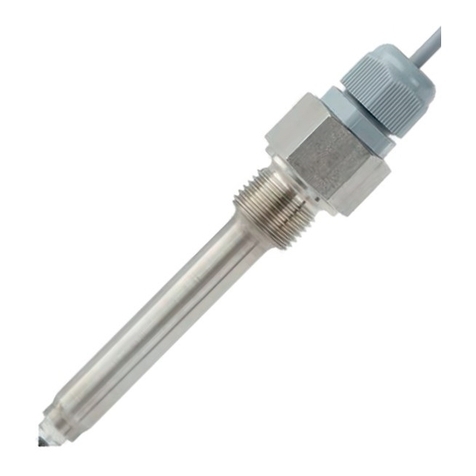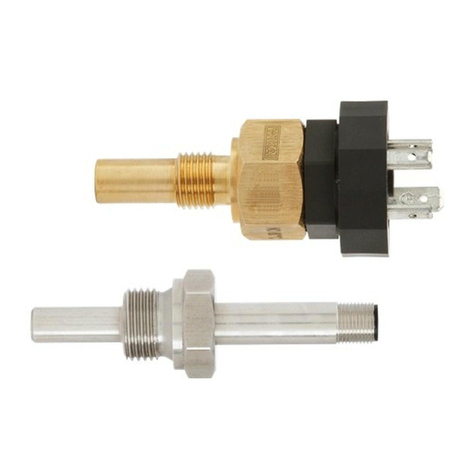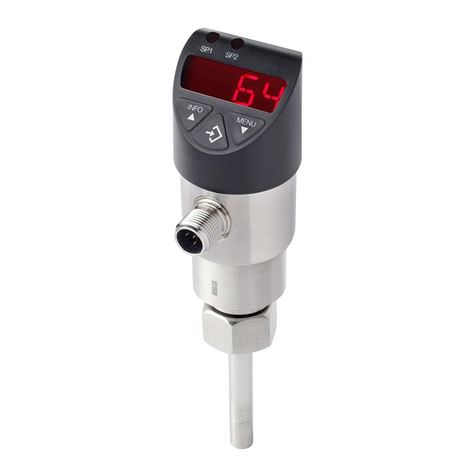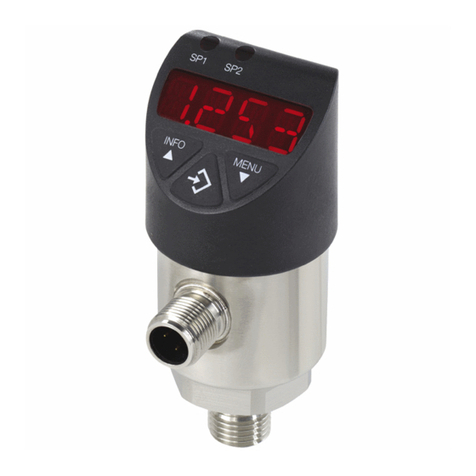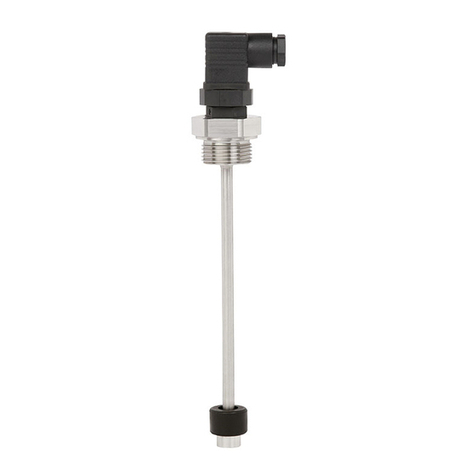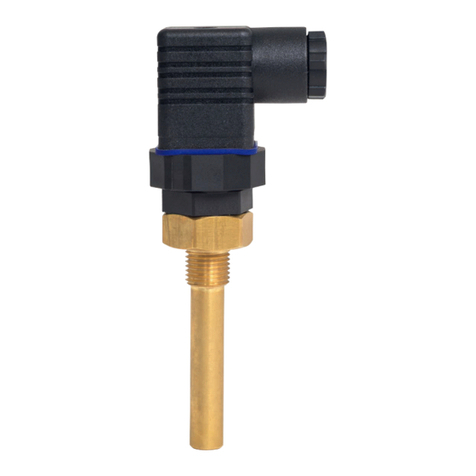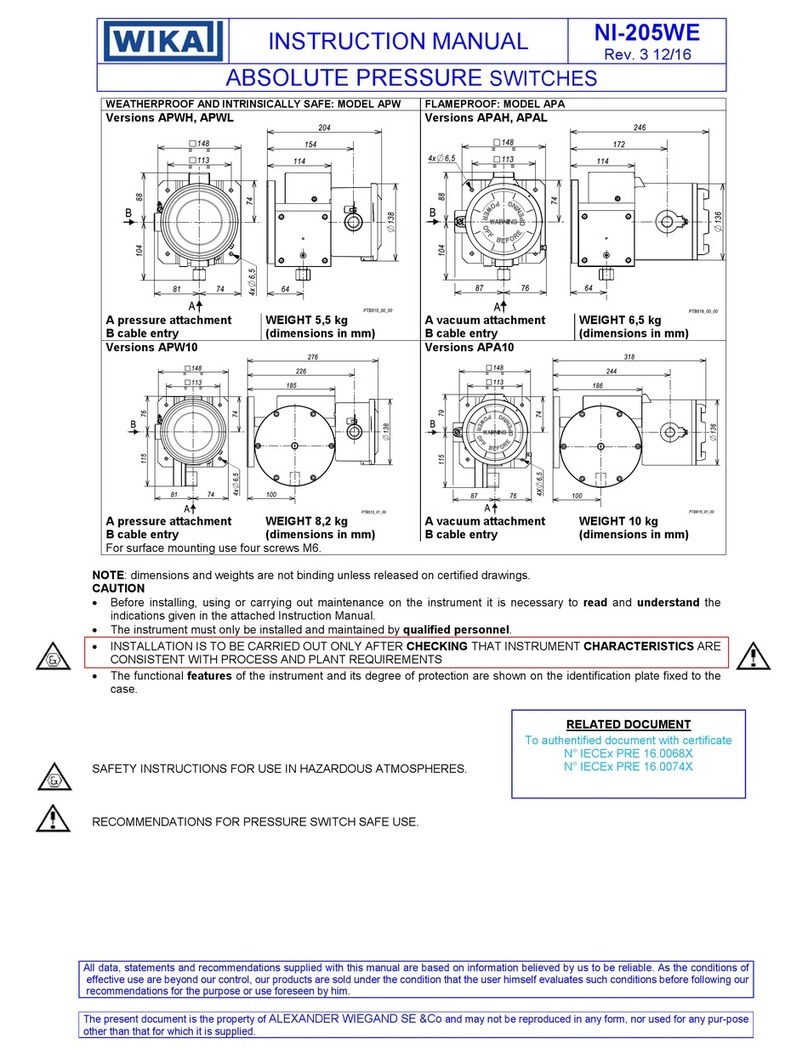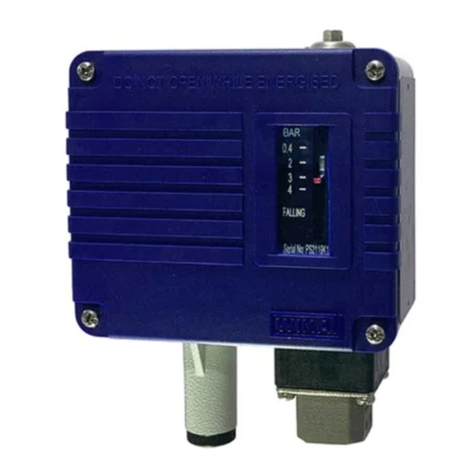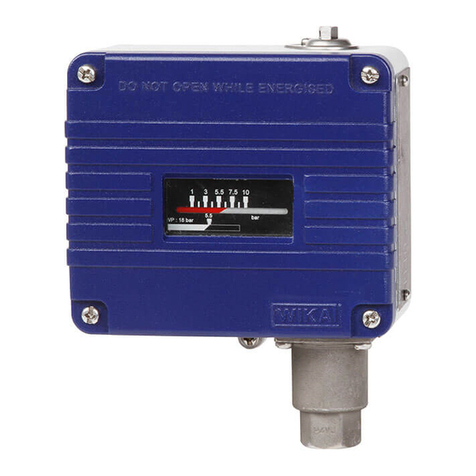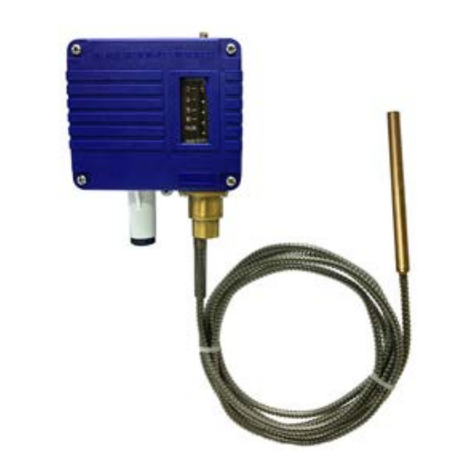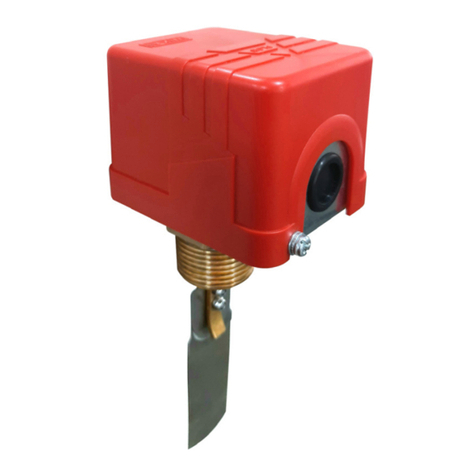
2
3
83795208.01 04/2022 EN
WIKA operating instructions, flow switch, model FSFD
WIKA operating instructions, flow switch, model FSFD
3.2 Intended use
The model FSFD was developed to detect ow in wet sprinkler systems once the
sprinkler has been triggered.The pneumatic time delay can be adjusted on-site between
0 ... 70 seconds via an adjustment dial to avoid false alarms during water surges.The
instrument can switch electrical loads of up to AC 250 V, 10 A.
WARNING!
Injuries due to incorrect application
Use in an incorrect application can result in considerable injury and damage to
property.
▶If the valves controlling the water supply to a sprinkler system are closed,
the vane-type flow switches will not operate.All valves controlling the water
supply to a sprinkler system should be sealed or locked in the normally open
position.The normally open position should be monitored by a sprinkler
system monitoring switch.
▶Flow switches may not work, or may not work properly, if the sprinkler pipes
being monitored are blocked with deposits from slurries, stones or other
foreign objects. Sprinkler systems should be checked periodically for such
blockages, following the instructions in chapter 5 of NFPA standard 13A.
▶Only use the instrument in applications that lie within its technical perfor-
mance limits (e.g. max. ambient temperature, material compatibility, ...). For
performance limits, see chapter 9 “Specifications”.
▶Flow switches are not a substitute for insurance. Building owners should
always insure property and life which is protected by the sprinkler systems.
This instrument is not permitted to be used in hazardous areas!
The instrument has been designed and built solely for the intended use described here,
and may only be used accordingly.
The manufacturer shall not be liable for claims of any type based on operation contrary
to the intended use.
3.3 Improper use
WARNING!
Injuries through improper use
Improper use of the instrument can lead to hazardous situations and injuries.
▶Refrain from unauthorised modifications to the instrument.
▶Do not use the instrument within hazardous areas.
▶Do not use the instrument with abrasive or corrosive media.
Flow switches monitoring wet sprinkler systems must not be used to discharge
aqueous film-forming foam (AFFF), sprayed water or chemical suppression systems.
Flow switches used for these applications can result in false readings caused by water
surges, air pockets, etc.
Any use beyond or different to the intended use is considered as improper use.
3.4 Personnel qualification
WARNING!
Risk of injury should qualification be insufficient!
Improper handling can result in considerable injury and damage to property.
▶The activities described in these operating instructions may only be carried
out by skilled personnel who have the qualifications described below.
Skilled electrical personnel
Skilled electrical personnel are understood to be personnel who, based on their technical
training, know-how and experience as well as their knowledge of country-specific regula-
tions, current standards and directives, are capable of carrying out work on electrical
systems and independently recognising and avoiding potential hazards.The skilled electri-
cal personnel have been specifically trained for the work environment they are working in
and know the relevant standards and regulations.The skilled electrical personnel must
comply with current legal accident prevention regulations. Special operating conditions
require further appropriate knowledge, e.g. of aggressive media.
3.5 Labelling, safety marks
Product label (example)
Manufacturer's address Flow rate
Date of manufacture Pipe size
Ingress protection Article number
Electrical rating Serial number
Operating pressure Approvals
Before mounting and commissioning the instrument, ensure you read the
operating instructions!
4. Transport, packaging and storage
4.1 Transport
Check the instrument for any damage that may have been caused by transport.
Obvious damage must be reported immediately.
CAUTION!
Damage through improper transport
With improper transport, a high level of damage to property can occur.
▶When unloading packed goods upon delivery as well as during internal
transport, proceed carefully and observe the symbols on the packaging.
▶With internal transport, observe the instructions in chapter
4.2 “Packaging and storage”.
If the instrument is transported from a cold into a warm environment, the formation of
condensation may result in instrument malfunction.Before putting it back into operation,
wait for the instrument temperature and the room temperature to equalise.
4.2 Packaging and storage
Do not remove packaging until just before mounting.
Keep the packaging as it will provide optimum protection during transport (e.g. change
in installation site, sending for repair).
Permissible conditions at the place of storage:
■Storage temperature: 0 ... 68 °C [32 ... +154 °F]
■Humidity: 35 ... 85 % relative humidity (no condensation)
Avoid exposure to the following factors:
■Direct sunlight or proximity to hot objects
■Mechanical vibration, mechanical shock (putting it down hard)
■Soot, vapour, dust and corrosive gases
■Hazardous environments, flammable atmospheres
Store the instrument in its original packaging in a location that fulfils the conditions listed
above.
5. Commissioning, operation
Familiarise yourself with the following guidelines before installation:
■NFPA 72: National fire alarm and signaling code
■NFPA 13: Installation of sprinkler systems, section 3.17
■NFPA 25: Inspection, testing and maintenance of sprinkler systems, section 5.3.3.2
■Other applicable NFPA guidelines, local regulations and requirements of the compe-
tent authority
